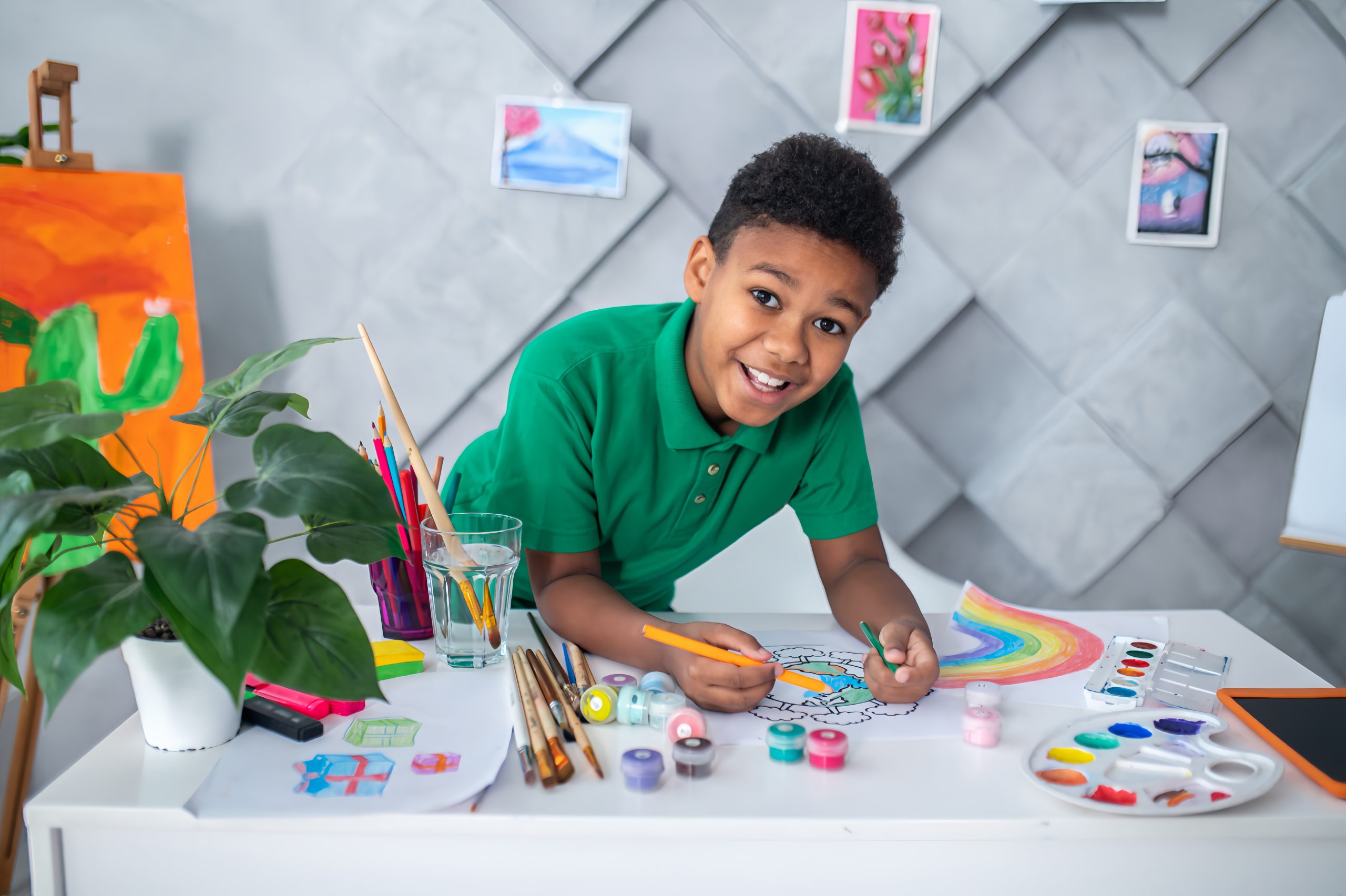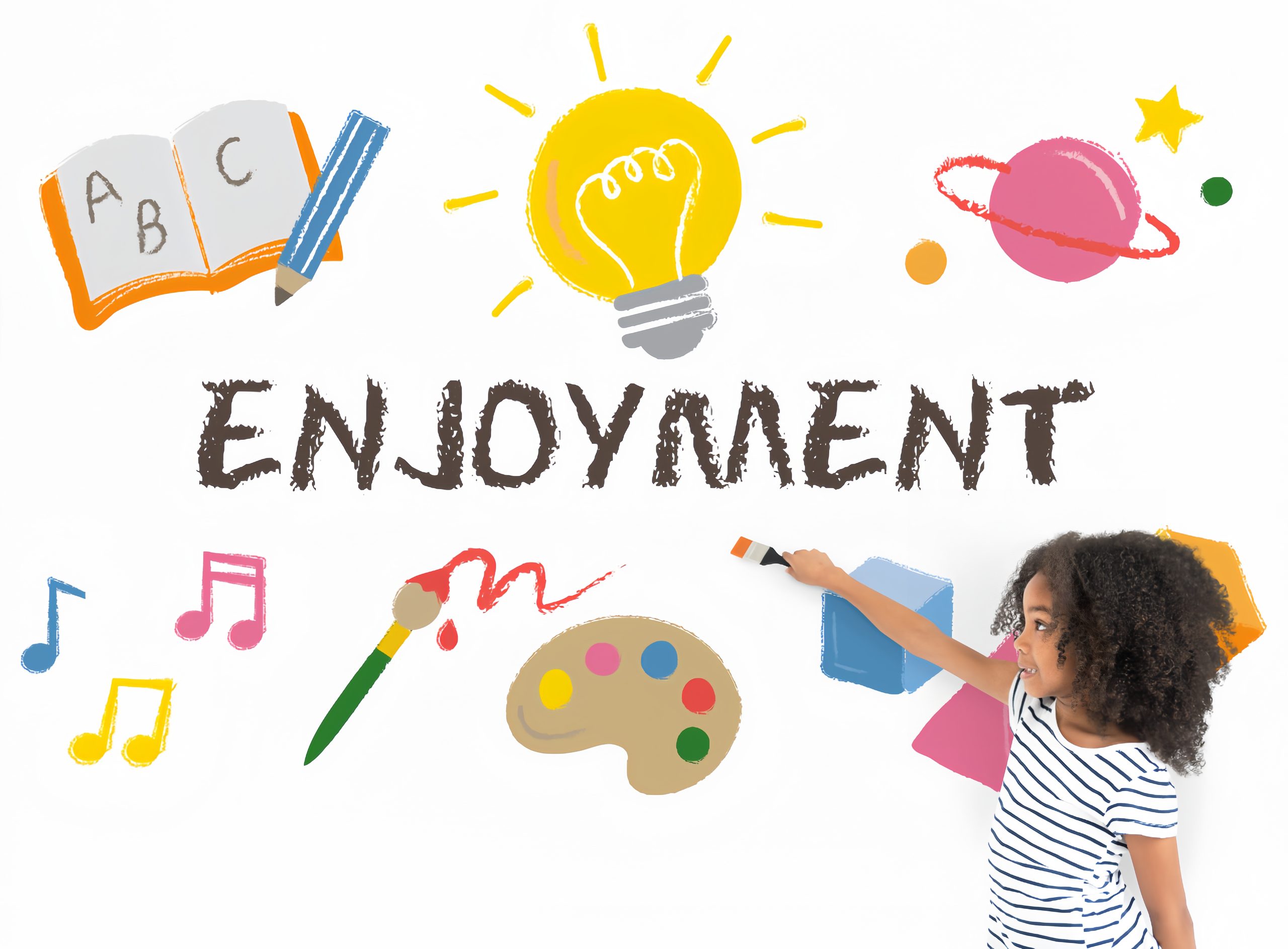Creativity for kids- A Parent’s Guide


Creativity is a valuable skill. It allows generating novel ideas to enrich life and solve problems. Imagination peaks in childhood. Parents play a key role in nurturing kids’ creative thinking. This guide covers the benefits of creativity and signs of creativity in children. It also addresses ways to foster it through play, activities, and environment. Plus, it discusses common obstacles faced.
Why Creativity Matters
Imagination and innovation are increasingly vital in our complex global economy. Here are some key benefits creativity provides children with:
- Problem-solving : Creative kids can think flexibly to come up with solutions.
- Self-expression : Creativity is an outlet for expressing individuality and emotions.
- Confidence : Coming up with novel ideas boosts confidence and self-esteem.
- Critical thinking : The creative process involves making connections between concepts.
- Collaboration : Group creativity projects build teamwork and communication skills.
- Future success : Creativity is highly valued in business, science, and the arts.
- Handling stress : Creative activities can help manage anxiety, fear, and sadness.
- Discovery : Creativity leads to exploring ideas without judgement, leading to discovery.
Nurturing children’s creativity has lifelong benefits across personal, professional and social realms.
Signs of Creativity in Kids
All children have creative potential. Here are some common signs of creativity:
- Vivid imagination : Making up elaborate stories and worlds in dramatic play.
- Inventing new activities : Coming up with unique games and ways of playing.
- Problem-solving : Finding clever solutions to challenges.
- Artistic expression : Love of drawing, painting, music, dance, writing, crafts.
- Humor : Telling jokes and finding humor in situations.
- Curiosity : Asking questions to understand how the world works.
- Innovative ideas : Thinking about familiar things in new, unusual ways.
- Resourcefulness : Using everyday objects to make or build things.
- Nonconformity : Not afraid to stand out from the crowd in dress or interests.
Pay attention to how your child plays and expresses themselves. Use this to identify their creative strengths.
Fostering Creativity Through Play
Play is the best way to nurture imagination in early childhood. Here are some tips:
- Make sure they have unstructured play time to follow their own ideas. Avoid overscheduling activities.
- Offer toys such as blocks, dolls, and play dough that children can use in various ways.
- Set up areas for different types of play – art, reading, music, dramatic play. Change it up periodically.
- Have art supplies like paper, crayons, scissors, paint readily available.
- Encourage outdoor play in nature which stimulates the senses.
- Allow free exploration of instruments, voice, movement to find what excites them.
- Ask open-ended questions about their creations without judgement.
- Be a playful role model yourself trying new activities with an open mind.
Freedom, exploration, and diversity in play allow young imaginations to flourish.
Creative Activities for Kids
Beyond play, there are endless engaging activities that spark innovation:
Art
- Drawing, coloring, painting, sculpting with clay, chalk drawing
- Printmaking with vegetables, fruits, or sponges
- Mixed media collages with magazines, buttons, fabric
- Watercolor resist art using wax crayon outlines
- Marbling paper floating paint in shaving cream
Writing and Reading


- Write and illustrate their own books or comic strips
- Create rhyming or acrostic poems
- Make story dice with pictures to prompt imaginative tales
- Read fiction books together sparking new ideas
Building
- Building and inventing with cardboard boxes, tubes, wood
- Putting together puzzles or models of animals, structures
- Construction toys like Lego, blocks, magnet tiles
- Making dollhouses, forts, or miniature worlds
Science
- Mixing colors, solutions, ingredients for chemical reactions
- Nature science experiments and observations
- Planting seeds and tracking their growth
- Cooking or baking interesting items while measuring
Music and Movement
- Making own instruments with boxes, cans, rubber bands
- Compose songs and rhythms acapella or with instruments
- Develop dances, choreograph moves, put on shows
- Play music guessing games matching moods or tempo
Trying out new materials, combinations and projects stretches creativity.
Creating an Encouraging Environment
Also to activities, a supportive home environment cultivates innovation:
- Make space for mess and projects – cover tables, floor.
- Collect recycled materials like boxes, bottles, paper rolls for building.
- Gather supplies for variety – crayons, paint, clay, fabric, stickers.
- Display their artwork and creations proudly around the home.
- Play diverse music from classical to pop exposing them to new styles.
- Have books on science, nature, art and diverse cultures.
- Allow rearranging bedroom furniture periodically for a change.
- Appreciate their interests instead of pushing more conventional hobbies.
An enriching, unstructured space exposes one to many materials and mediums. This nourishes creativity long-term.
Avoiding Roadblocks
There are some common obstacles that can undermine creative confidence:
- Excessive screen time : Too much passive consumption suppresses original thought.
- Overstructured schedule : Allow free time for self-directed play and exploration.
- Not making messes : Messy exploration is key, within limits.
- Rigid instructions : Loose parts and open-ended activities nurture more innovation.
- Judgement : Criticizing ideas may discourage further risk-taking.
- Perfectionism : Focusing on the process not the end product boosts creative thinking.
- Comparison : Every child has unique creative strengths. Avoid competition.
- Do not undervalue creativity. Treat it as importantly as math or reading skills from a young age.
The right environment and encouragement can give children lifelong creative confidence. It comes from nurturing their interests.
Conclusion
Imagination peaks in childhood. Parents can foster priceless creative thinking skills through unstructured play. They can do so through diverse activities and an encouraging home environment. Creativity builds confidence, problem-solving, collaboration, self-expression and mental flexibility. Avoid overstructuring their time, judgemental language, and obstacles like excessive screen time. Appreciate and display their artistic creations proudly. Children flourish creatively with the space to explore and make messes. It benefits all aspects of their lives with out-of-the-box thinking.
FAQs
What are the stages of creative development in childhood?
Psychologist E. Paul Torrance broke it into heightened fantasy play ages 2-7. Then came artistic expression 7-11, passion and imagination 11-13. Next, there were developing interests 14-18. Finally, there were later mentorships and skill development.
What are simple activities to build creativity at home?
Open-ended toys like blocks, playdough, dolls, musical instruments. Art supplies like crayons, paint, chalk. Household items for music, construction, imaginative play. Reading, writing, poetry, songwriting. Science experiments. Puzzles and board games.
How much unstructured playtime do experts recommend for preschoolers?
The American Academy of Pediatrics recommends at least 1 hour of unstructured play per day for kids ages 2-5. It supports creativity. Outdoor time is great too.
What toys are best for creative play? Building toys like Lego, blocks and magnet tiles. Arts and craft materials. Play dough and slime. Dress up clothes. Sandboxes and water tables. Simple musical instruments. Puppets and dolls with movable parts.
How can I convince my child not to give up when feeling frustrated creatively?
Confirm their feelings. Remind them failure and mistakes are part of the creative process. Emphasize effort and enjoyment over outcomes. Offer to collaborate. Take a break and come back afresh. Celebrate small successes.

